How to play Last Child by Aerosmith on guitar
In this post, you’ll get a breakdown of tips and tricks to help you unlock Aerosmith's hit song "Last Child." Throughout this lesson, you will discover the connection between blues and rock guitar styles as we delve into the key points of playing "Last Child."
Who wrote Last Child?
"Last Child" was originally written by Steven Tyler and Brad Whitford. It was first released as a single from the album Rocks in 1976. The song reached number 21 on the Billboard charts and became one of the many hits for Aerosmith during the mid-1970s.
How do you play Aerosmith Last Child on guitar?
The opening guitar part for “Last Child” starts off using a guitar technique called arpeggio picking. This is where you plant down a chord with your fretting hand and then pick out individual strings one at a time. Instead of strumming the chord, you are breaking it up and creating an arpeggio.
You’ll need 3 shapes for your fretting hand, Dm9, G6, and E7.
Here’s how I would play each shape.
Dm9 looks like an open-position Am chord but relocated up to the 6th position like this:
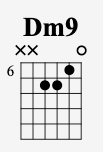
G6 is played in 5th position like this:
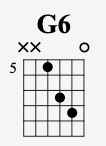
E7 moves up to the 7th position and is played like this:
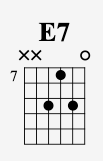
Notice how all of these chords are played on the top 4 strings. Plus they also have a common tone between them of the open 1st string. Keeping all the chords on the same consistent amount of strings and having the common tone of the open 1st string really glues the part together and makes it sound cohesive.
The intro chord progression starts with 2 bars per chord.
Dm9 (2 bars)
G6 (2 bars)
E7 (2 bars)
In the final bar, the E7 is moved up one fret at a time to lead into the blue rhythm. (See the video above for a demonstration.)
Arpeggio Picking
Once you have the chord shapes down next try to add some arpeggio picking to the progression. Each chord follows the same picking pattern. Start on the 4th string and pick down through the strings one at a time until you get to the 1st string.
Once you get to the 1st string the pattern comes back and plucks the 2nd, 3rd, and then 4th strings.
Essentially it moves step-by-step from one string to the next and then back. This requires control with the strum hand and if it’s your first time trying something like this, as opposed to strumming chords, take your time. It won’t be perfect at first but over time you will get more accurate with your picking.
Here is an example of this style over a Dm9 chord:

From there you can apply the same picking techniques throughout the progression.
Funky Blues Riffs
After the intro, the song goes into a very common blues-style rhythm pattern in the key of E. However similar to how the intro broke up the chords, the riff also breaks up a blues rhythm pattern.
For example, a typical blues rhythm pattern might go something like this:
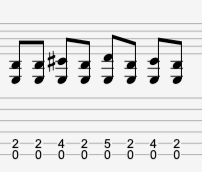
But Brad Whitford and Joe Perry in this song take that classic rhythm and break it up.
To play in the style of this riff. Start off with two sixteenth notes playing an E5 power chord, and then the 2nd fret on the 5th string. After that play the 4th fret on the 5th string like this:

Then continue on the 5th string with the frets 5, 4, 2, 4. These are the same common group of notes used in blues rhythm patterns.
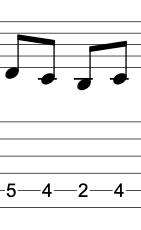
Finally, then end the groove with the open 4th string to the 2nd fret like this:

Going from the note D to E in the last beat is a classic sound you hear in the blues all the time. Once these steps feel comfortable try putting them all together like this:

Tip: Reference 6:45 seconds in the video above to jam this along with me.
Scales
Throughout the tune, there are many little guitar riffs played by Whitford and Perry that can be grouped into specific scales for the song.
The two most important scales to know for this would be the E Dorian mode and the E minor blues scale.
The E Dorian mode can be played at the 12th fret like this:
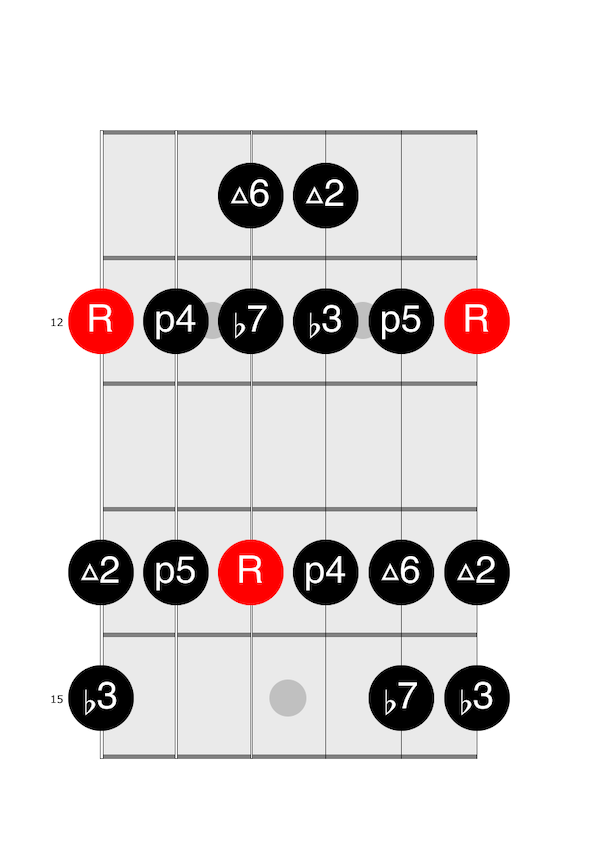
The strings and frets can also be thought of like this:
6th string: 12, 14, 15
5th string: 12, 14
4th string: 11, 12, 14
3rd string: 11, 12, 14
2nd string: 12, 14, 15
1st string: 12, 14, 15
The second scale to know would be the Em blues scale. This scale can be played also at the 12th position like this:

The strings and frets for this can be played like this:
6th string: 12, 15
5th string: 12, 13, 14
4th string: 12, 14
3rd string: 12, 14, 15
2nd string: 12, 15
1st string: 12, 15
Here is an example of a riff, all on one string, using the E Dorian mode:
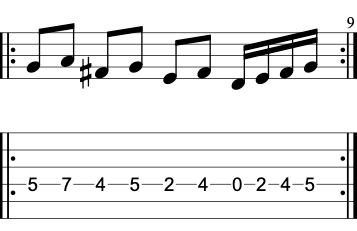
Notice the use of the F# note this is a key indicator, as well as later in the song the use of the note C#. These two notes added to an Em pentatonic scale give you the Dorian mode.
As far as the blues scale is concerned that would be paired up with the funky blues riff we covered above. Keep in mind that this riff came straight out of a blues rhythm pattern. So the blues scale and blues rhythm patterns go hand and hand.
How to Sound like Aerosmith
Aerosmith's guitar tones are gritty and edgy. Here are some tips to help you get that signature sound:
- Amp Settings: Set your amplifier for a slightly overdriven sound with a good amount of mid-range. Experiment with the gain and tone controls to find a balance and reference the recording as you do.
- Distortion Pedals: Consider using a distortion pedal in front of your amp to add more grit and sustain to your tone. Look for pedals that offer a more vintage rock sound, as opposed to metal, or super hi-gain tones.
- Pickups: Aerosmith often used humbucker pickups in their guitars, which produce a thicker and more powerful tone. Think like a Gibson Les Paul sound.
- EQ and Compression: Use EQ to boost the midrange frequencies for a punchier sound. Additionally, adding distortion is adding compression to your sound. So no need for a compressor pedal just use a distortion pedal, or crank a higher gain amp up.
- Effects: Try adding just a little bit of reverb as well to give your sound a sense of space. But don’t go overboard with this. Use it subtly to enhance your sound.
Achieving the perfect tone takes time and experimentation. Use these tips as a starting point and let your ears guide you to fine-tune your sound.
Conclusion:
In conclusion, learning Aerosmith's "Last Child" on guitar is a great way to explore and expand on new rock guitar techniques. From understanding the song's background, chord progressions, techniques, and scales, to even learning how to get an authentic Aerosmith-style guitar tone will do wonders for your rock guitar playing. So, have fun playing and for another great rock lesson check out “I Love Rock N Roll” next!
Like this blog post? Get Jon’s best guitar lessons straight to your inbox.
